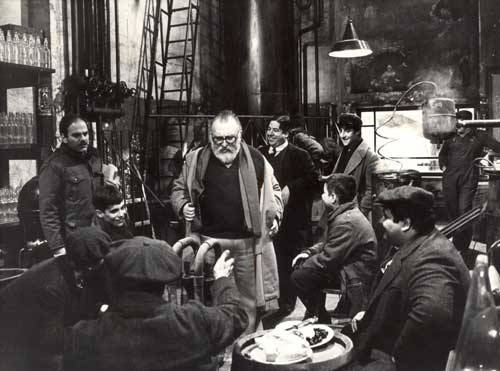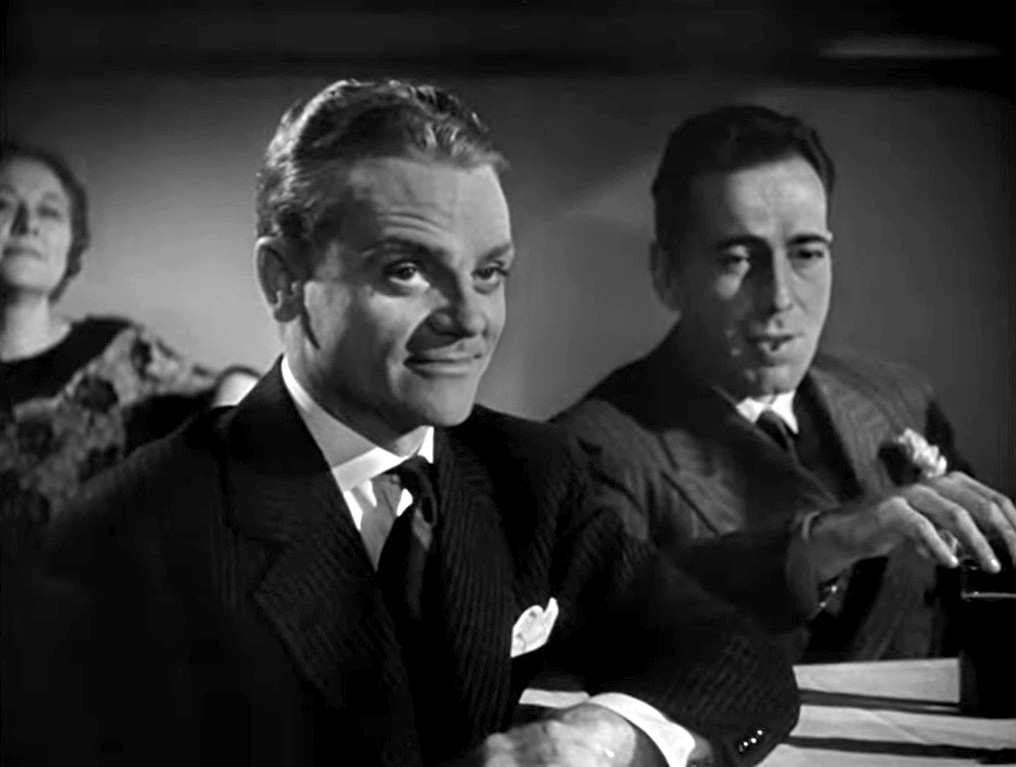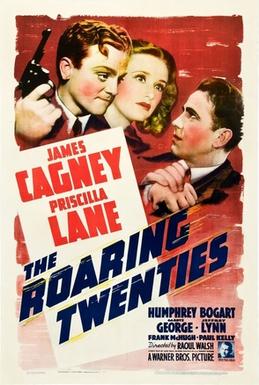Confessions of a Film Junkie: Best Roaring Twenties Gangster
Film
By: Brian Cotnoir & Lauren Ennis
Once again we have
decided to do another debate on “Confessions of a Film Junkie”; this week’s
topic is what is the “Best Roaring Twenties Gangster Film”? Me and another critic will face off and
present our sides of what we feel is the Best Gangster film to be set in “The
Roaring Twenties”—the birth of the American Gangster Genre. The other writer is a good friend and a
writing mentor of mine, Lauren Ennis. So
Enjoy and as always don’t forget to lets us know who you felt was more
right.
Once Upon a Time in America: By Brian
Cotnoir
Italian Director
Sergio Leone’s 1984 film “Once Upon a Time in America” may not be as popular
and successful as other Gangster films such as “The Godfather” or “Scarface”,
but it is not only Leone’s finest work, but quite possibly the Best Gangster
film ever. Now before I continue I want
to give you a little background. The
film is based off a novel called “The Hoods” by Harry Grey, and the original
Screenplay written for this film was 317 pages long (which translate out to
over 4 1/2 hours of film material).
Leone was forced to make a lot of cut to the film and the film was
eventually settled at a running time of roughly 3 hours and 45 minutes. There were even more cuts made for the U.S.
release and the films average running time in America was 2 hours and 19
minutes. Because of all these cuts to
the film many critics hated the film when it was released in the U.S. Some critics even called it the Worst film of
1984, and years later when they saw the “uncut” version their opinions changed
and some called it the Best Film of the Decade.
So for argument purposes, in this debate, the version of the film I am
talking about is the one that is 3 hours 45 minutes long, which I believe is
the best cut of the film abridgments.
 |
| Robert De Niro & James Woods play the adult versions of Noodles & Max |
So
as I said “Once Upon a Time in America” is based off of a novel called “The
Hoods” and it details the lives of 5 boys growing up in the Jewish Ghetto New
York City, and eventually how they became involved in Organized Crime, and
their rise up success. The story to the
film is told in flashback form and stretches all over from 1920-1968. I know that this is supposed to be a best
“Roaring Twenties Gangster” film and the 1960’s don’t really count, but most of
the film is set in the Prohibition Era and the scenes set in 1968 are there to
help set up the flashbacks. The two main
characters in the film are two friends David “Noodles” Aaronson (played by
Scott Tiler as an adolescent and Robert DeNiro as an Adult) and Max Bercovicz
(played by Rusty Jacobs as an adolescent and James Woods as an adult). I really like how it shows how the
friendships of the Noodles & Max started back when they were young
teenagers and show they got involved in organized crime and became notorious
gangsters. This film takes its sweet
time introducing its characters and letting them develop and it definitely
shows that Sergio Leone put a lot of thought into how each scene was going to
play out and how the adult actors would have to reflect the version of their
younger selves portrayed by the child actors and visa versa.
 |
| 12-year-old Jennifer Connelly makes her big screen debut in "Once Upon a Time in America" as Young Deborah. |
Robert DeNiro
& James Woods this film also features a plethora of other famous actors and
actresses such as Elizabeth McGovern, Tuesday Weld, Joe Pesci, James Russo,
Danny Aiello, and this film was also the big screen debut for a young actress
by the name of Jennifer Connelly. All
the characters in the film have unique and interesting stories and it’s great
that we get to see them as both adolescents and as full grown adults. Besides the acting and the cast, I have
to say my favorite thing about the film is the sets. I swear the sets and the scenery in this film
are phenomenal, it’s like director Sergio Leone took the cast & crew back
in time and actually shot the whole film in the real “Roaring Twenties”.
 |
| Director Sergio Leone, working out the details of the scene with the cast of "Once Upon a Time in America" |
“Once
Upon a Time in America” truly is a great film and does not get a lot of the
credit and recognition that it deserves.
This was the last film that Sergio Leone ever directed and it is also
the film that he put the most work into and all his hard work, dedication, and
persistence shows in this film. To this
date this is the only film over three hours long that I can sit through and
watch and be constantly entertained, but remember only see the version of the
film that says “Color/229 Minutes” on the back because if you watch any of the
other abridged versions of this film you will probably be disappointed.
The Roaring Twenties: By Lauren
Ennis
The Gangster film is a genre which
is uniquely American in its ability to utilize the ethnic identities, family
loyalties, and financial ambition that came to define American life in the
transformative years following the First World War. The modern gangster film is
often characterized by a reverence for its criminal protagonists and disdain
for the ‘sucker’s’ that they are able to dominate. Compared to modern, now
formulaic, depictions of the mob subculture as one of grit and glamour, it is ironically one of Hollywood’s earlier
efforts that remains unique. The 1939 film The
Roaring Twenties portrays Prohibition era gangsters and the world that they
inhabit with a complexity and honesty that sets it apart from other gangster
films in both the modern and studio eras.
The film opens not in a
back-alley joint or criminal hideout, but instead in a fox-hole in France
during World War I. The opening scenes introduce a trio of friends who will
later find their paths crossed with tragic consequences when they return to the
States. James Cagney’s performance as
the protagonist, Eddie Bartlett, is a perfect example of his naturalistic acting
style. In Cagney’s hands Bartlett is both passionate and practical; an average
American whose life is turned upside down by the extraordinary times in which
he is struggling to survive. After celebrating the Armistice with friends
George (Humphrey Bogart) and Lloyd (Jeffrey Lynn), Eddie returns home to a
country that has moved on without him. In America, Eddie makes ends meet
driving a cab and comes into contact with brash bootlegger Panama Smith,
(Gladys George in a portrayal based off of notorious nightclub hostess Texas
Guinan) who offers him entrance into an alternative world of easy money and
fast living. With her help, Eddie eventually builds himself a successful
business, which he later enlists his old war buddies into joining.
Complications follow when ruthless George tires of playing second fiddle to
Eddie and Lloyd strikes up a romance with chorus girl Jean (Priscilla Lane),
the object of Eddie’s unrequited affection.
Perhaps the most striking aspect of
this film is the fact that it was inspired by the real events and people that
screenwriter Mark Hellinger encountered during his time as a reporter. Because
the film is inspired by reality, it follows a realistic plot line which
ultimately results in the demise of the gangsters and their way of life after
the fall of Prohibition. Prior Warner Brothers’ films generally portrayed
gangster’s as one of two things, either a ruthless psychotic or, more often, a
tough kid hardened into a criminal by society. The Roaring Twenties does its characters justice be refusing to pigeonhole
them into either category, and instead allows each character to act based upon
his personal motives and moral code. For instance, while Eddie is forced into
crime by economic circumstance, he and privileged lawyer Lloyd are hardly
social victims. Similarly, Bogart’s villain, although ruthless, acts according
to logic and reason.
 |
| Actors James Cagney (L) & Humphrey Bogart (R) |
The
film also does excellent work in its depiction of female characters. On the
surface, Panama and Jean represent opposite sides of the traditional Hollywood
spectrum; the brassy bad-girl and the pure heroine. As the film progresses,
however, both women are proven to be more complicated than audiences may
initially suspect. Although Panama puts up a tough front while acting as ‘one
of the boys’ in Eddie’s operation, she is one of the only characters to display
true tenderness when she stands by Eddie after his business collapses in 1929.
She also demonstrates a sense of self-sacrifice when she steps aside and asks
him to help former flame Jean at the end of the film despite her own feelings
for him. Similarly, Jean proves herself to be a dynamic character as she grows
from Eddie’s wide-eyed admirer to a shrewd woman. Priscilla Lane portrays
Jean’s moral conflict between condemning Eddie’s criminal lifestyle while
simultaneously enjoying its benefits in such a way that audiences are more
inclined to identify with than criticize her.
Thus,
while it may not possess the flashy ‘shoot ‘em up’ style of its later
counterparts, I whole-heartedly recommend The
Roaring Twenties as one of the most realistic and honest gangster films.
The film’s combination of realism, excellent performances, and snappy dialog
will keep viewers engaged despite its more restrained style and black and white
cinematography. The film also provides movie buffs with a snapshot of James
Cagney at the prime of his career as the king of Warner Brothers’ ‘Murderer’s
Row’, and Humphrey Bogart on the verge of making his mark as the poster-boy for
film noir. Just try and watch that final scene without getting a tear in your
eye, ‘big shot’.





No comments:
Post a Comment